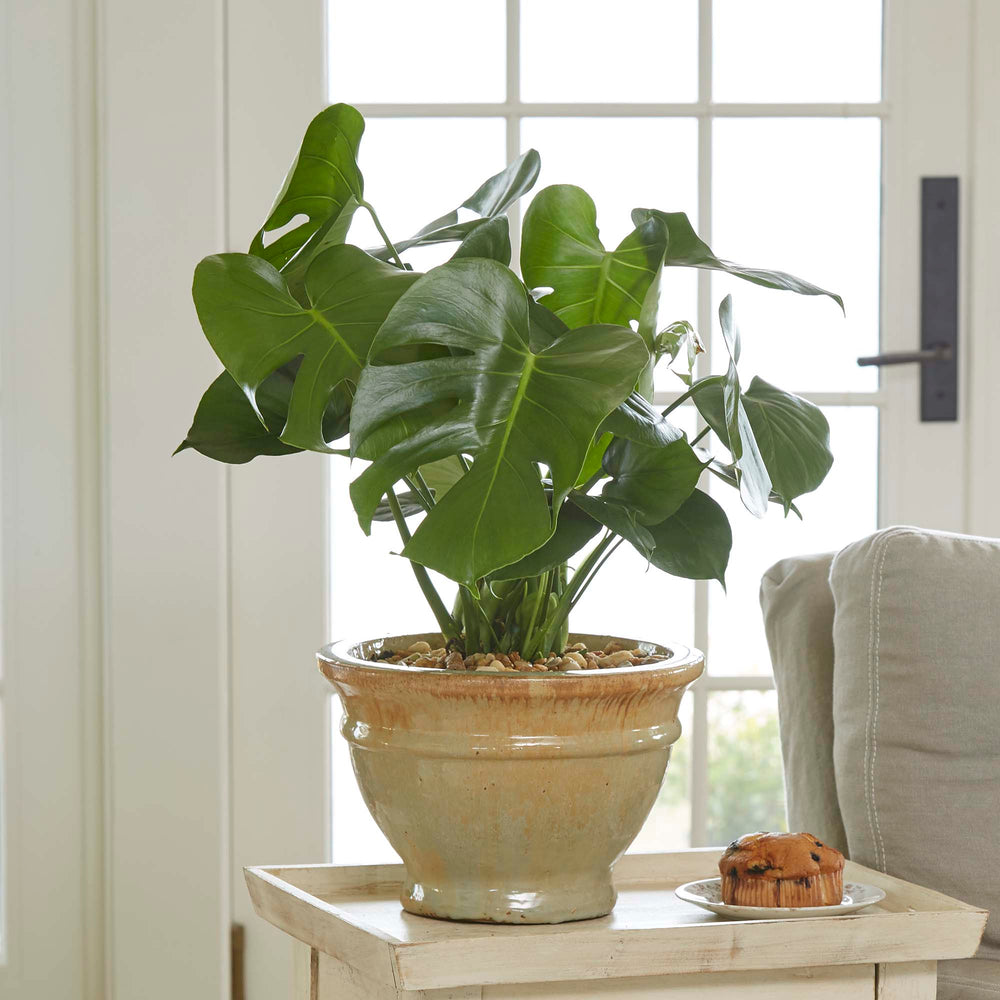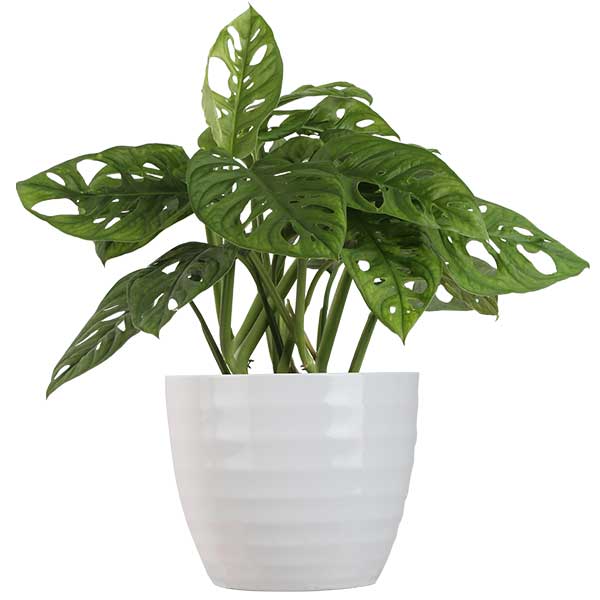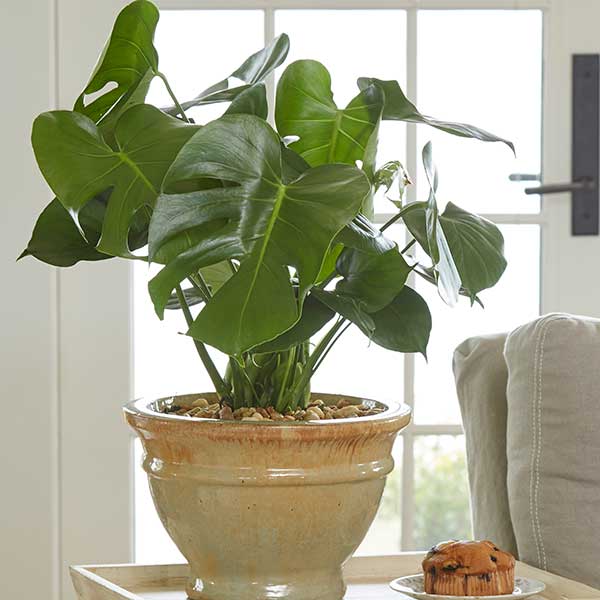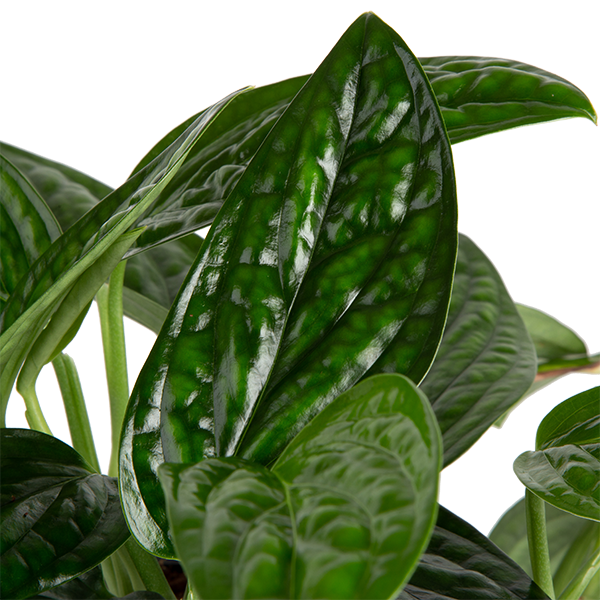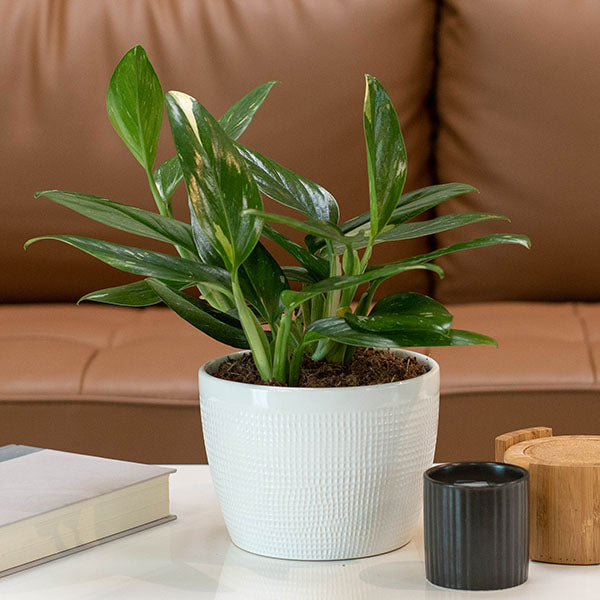Monstera (Monstera spp.)
Monstera Plant Features
Monstera may be the perfect houseplant for you if you're looking to create a big, bold, tropical feel in your home. It features big (2-foot-wide) leaves that look like they have holes or cuts in them, giving rise to two of its other common names: Swiss cheese plant and split-leaf philodendron (while monstera is not a type of philodendron, it is closely related to them).
While young, this houseplant has a dense, bushy shape, but as it grows, it wants to vine out. You can keep it bushy with regular pruning, or let it climb up a vertical support (such as fishing line fastened into the ceiling), for a decidedly bold and tropical look.
Looking for something smaller? Little Swiss monstera (Monstera adansonii) offers smaller leaves that are still big on texture. The older the plant and the better the conditions, the larger it gets and the bigger its leaves grow.
If you have questions about growing monstera, just send us an email. Our houseplant experts are happy to help.
See how having houseplants around can make you healthier.
Buy a variety of Monstera, including Monstera deliciosa, Little Swiss, and Monstera sp. Peru online and have it shipped fresh from our farm, direct to your door from our online plant shop. Or find it online or at your favorite local garden center from one of our retailer partners.
Monstera Growing Instructions
Grow monstera just about anywhere in your house! It tolerates low light, but grows faster and becomes more dramatic in a bright spot. In most areas, it can take some direct sun on its leaves when grown in the house.Water monstera regularly -- enough to keep the soil from drying out. The plant is somewhat drought tolerant, so you don't need to worry about keeping up with the watering all time time. It's a survivor!
Fertilize monstera a few times in spring and summer to keep it happiest, especially if the leaves start to look light green or pale around the veins. You can fertilize it more regularly -- even weekly -- if you want more growth. Either way, use a houseplant fertilizer and adhere to the directions on the product packaging.
Note: Outdoors in frost-free areas such as Southern Florida, monstera can climb more than 60 feet and the leaves can grow 3 or even 4 feet wide. When happy outdoors, it produces calla-like blooms that turn into bizarre-looking fruit.
Monstera is not recommended for human or animal consumption.
-
Water
Medium water needs
-
Light
Indoors: High light
Indoors: Low light
Indoors: Medium light
-
Colors
Green
-
Special Features
Purifies the air
Super-easy to grow
Complement your Monstera
FicusMonstera is a big plant -- and a bold texture like rubber tree makes a great complement.
Money Tree
Grow money tree with monstera for a bold, modern look!
Snake Plant
Snake plant's spikey, upright texture is a bold contrast to monstera's large leaves.

